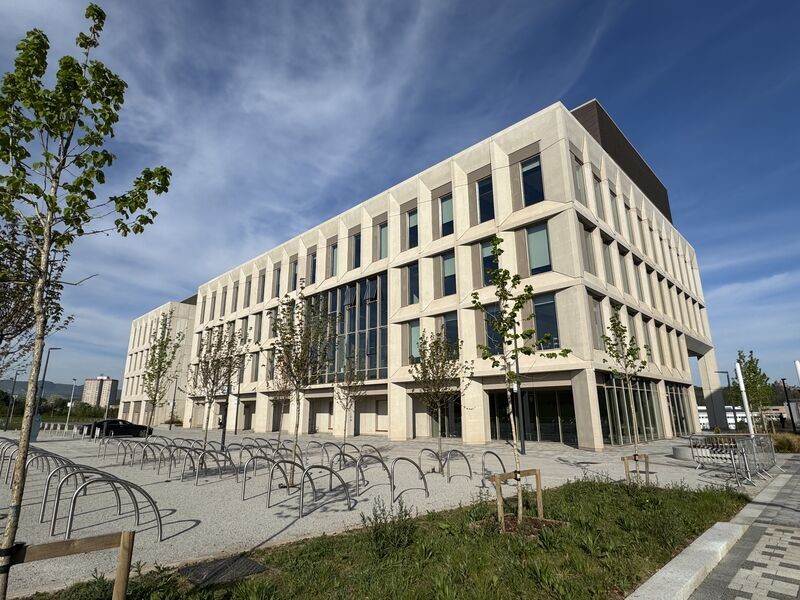
On 30 April 2025, leading voices from across the advanced therapies sector gathered in Edinburgh for Advanced Therapies Integrates North. Holding this vibrant event north of the border and outside the UK’s traditional “Golden Triangle” reflects the wider UK’s thriving life sciences innovation ecosystem—and Scotland’s growing role as a hub for ATMP research, development and delivery.
Held at the state-of-the-art Usher Institute, part of the University of Edinburgh’s BioQuarter, Advanced Therapies Integrates North brought together biotech leaders, academics, engineers, clinicians and many other stakeholders to explore how cell and gene therapies can move from the margins to the mainstream. With clinical trials, GMP manufacturing, and cutting-edge analytics all co-located on site—and with Scotland being home to Europe’s largest concentration of stem cell researchers—the day’s conversations were rooted in real-world capability and impact.
From accelerating digital transformation to building trust with patients, panellists and delegates alike shared bold ideas, hard-earned insights and a collective vision: to ensure that transformative therapies are accessible, affordable and scalable for the patients who need them most.
Despite breakthrough clinical outcomes, the vast majority of patients eligible for ATMPs still can’t access them. Some estimates suggest only 3% of eligible patients globally currently receive them. Without action to improve access, advanced therapies risk remaining powerful but peripheral innovations.
Equitable access emerged as one of Advanced Therapies Integrates North’s defining themes. Speakers addressed barriers at every level, from clinical trial participation and regional readiness to health system capacity and reimbursement policies. For countries like Scotland—with a smaller population and a nationalised healthcare infrastructure—there’s growing potential to pilot whole-population delivery models for curative therapies.
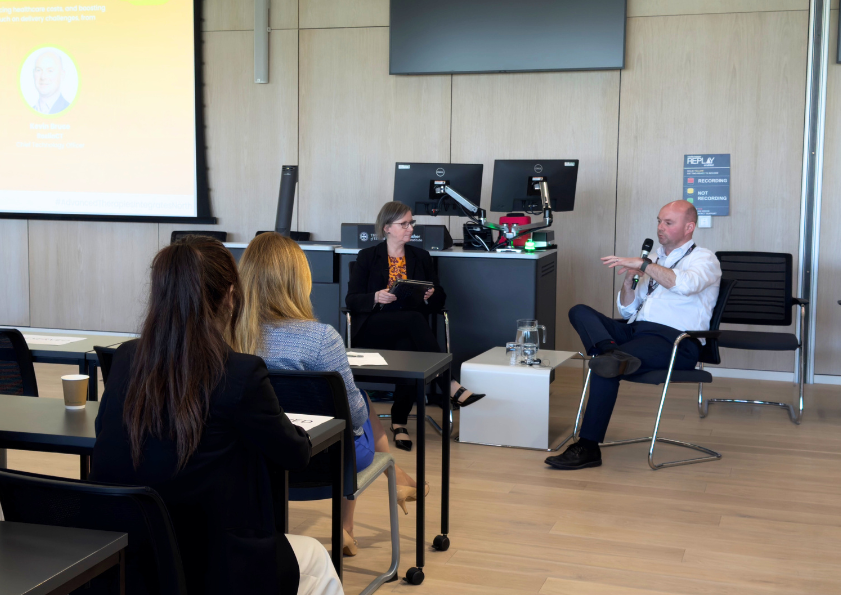
“These are therapies with the potential to cure—but if we can’t scale access, their long-term sustainability is at risk.”
Kevin Bruce shared the story of Victoria, the first sickle cell patient to receive exa-cel. After living with constant, debilitating pain since childhood, she described waking up post-treatment convinced she had died—because she felt no pain for the first time in her life. Stories like Victoria’s serve as powerful reminders that patients are desperate to access these life-changing therapies.
Patient access however, is not just about economics—it also hinges heavily on trust, inclusion and communication. Several speakers stressed the importance of integrating patient voice into every stage of development, from trial design to post-treatment follow-up. Patients and advocacy groups increasingly expect transparency, clarity and true collaboration—not just consultation. We learned how involving patients early helps identify meaningful outcomes, reduce drop-out rates and ensure therapies are not only clinically effective, but humanly relevant.
“Patients and PPI can’t be the icing sugar on top of the cake—they have to be part of the main ingredients baked into good study design.”
There were also calls for more diverse patient representation in trials, better public education about ATMPs, and a shift away from top-down engagement models. Access must include not only the availability of therapies, but the ability of patients to understand, trust, and influence the process of care.
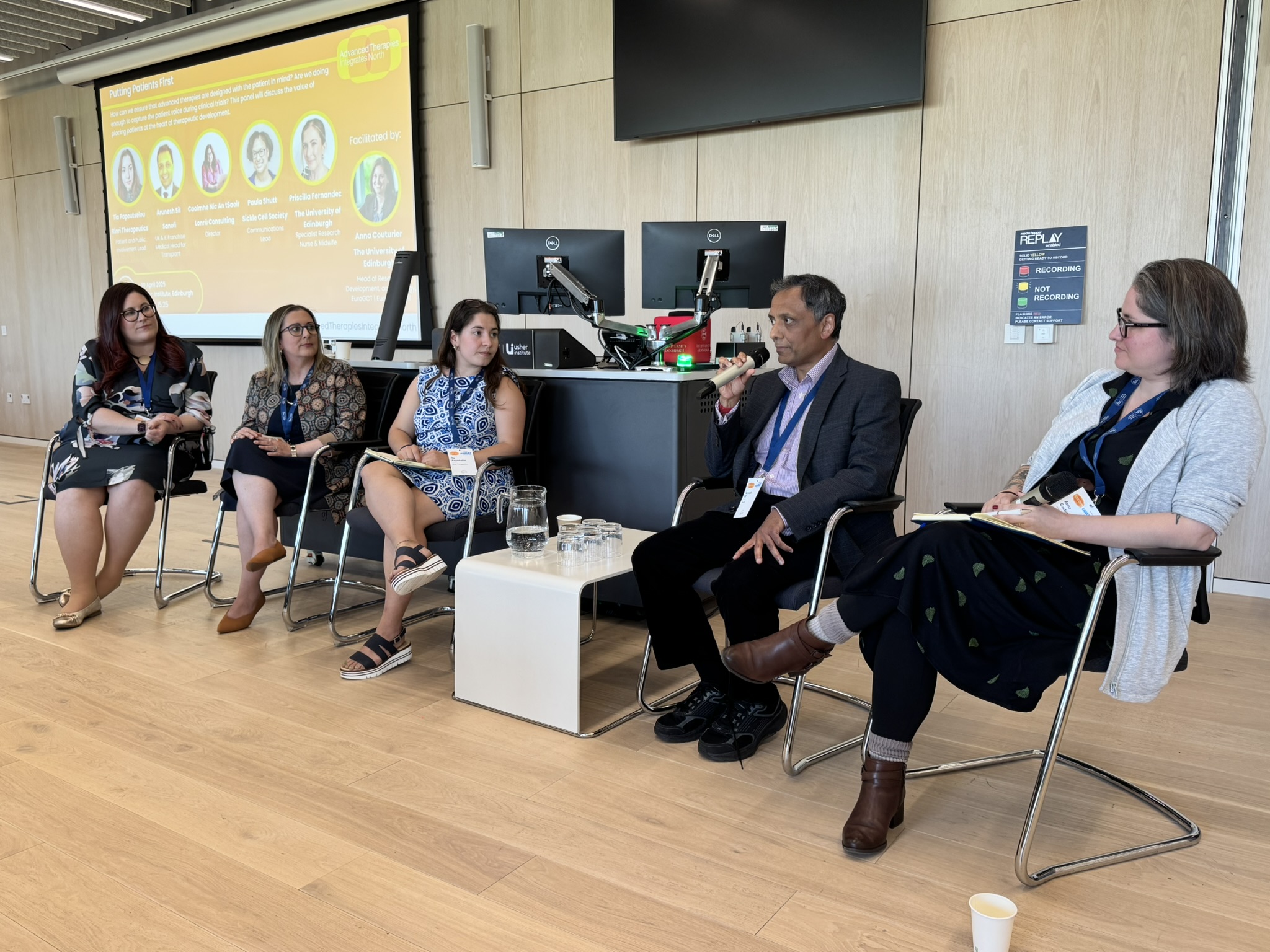
Digital transformation is a critical enabler of ATMP scale-up and sustainability. While many first-generation cell and gene therapies were brought to market using manual, bespoke workflows, such models cannot support the complexity and urgency of current pipelines. The sector now requires a fundamental shift: from siloed, labour-intensive processes to fully integrated, data-rich ecosystems that connect discovery, manufacturing, release and delivery.
Panellists shared heartening examples of how digital tools are progressing—but it appears implementation remains patchy. Many companies still rely on legacy infrastructure, with digital maturity varying widely depending on size, level of funding and regulatory needs. Even when automation is introduced, it is often limited to isolated steps, with little interoperability across systems.
“The first generation of advanced therapies stumbled when they scaled. They were brilliant scientifically, but often relied on processes that couldn’t grow. We’re now seeing a new wave of platforms—built with automation in mind. What’s missing is connection: how they talk to each other, how we create a truly end-to-end ecosystem.”
Looking ahead, the opportunity lies not just in automating tasks, but in orchestrating the entire value chain. From digital twins and predictive release to AI-driven optimisation, the next evolution of advanced therapy manufacturing will depend on meaningful, actionable, standardised data. But to reach that point, companies must invest early in digital infrastructure—and regulators must be brought along on the journey.
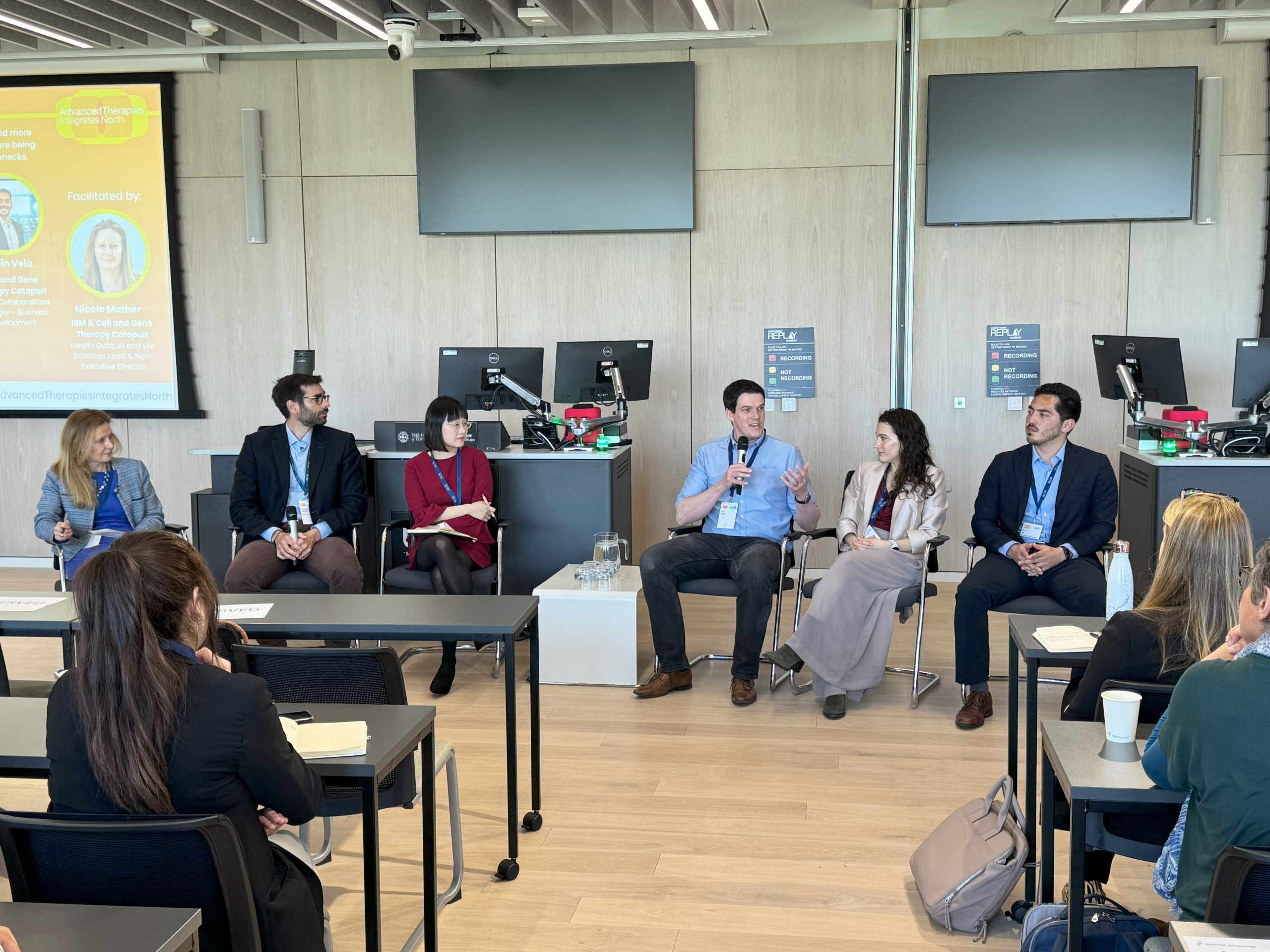
“Automation gets us part of the way. But the real gains in cost, consistency and quality will come from unlocking data. When we can connect patient outcomes back to the manufacturing process, we’ll be able to refine therapies with greater precision.”
Speakers at Advanced Therapies Integrates North underlined the importance of support frameworks like the Cell and Gene Therapy Catapult’s digital automation testbeds, which offer companies a lower-risk environment to trial new solutions. There was also discussion around the need for shared standards to support data integration, enable real-time quality control, and ultimately reduce the cost of goods.
One of the overarching themes that came up time and again at Advanced Therapies Integrates North was the value of collaboration—a practical necessity for success in advanced therapies. With complex pipelines, high costs and rapidly evolving technologies, no single organisation can deliver ATMPs in isolation.
Scotland was frequently held up as a model for what strong collaboration looks like in practice. The proximity of academic researchers, NHS trial sites, CDMOs and commercial developers—particularly in Edinburgh’s BioQuarter—enables faster feedback loops, smoother handoffs and integrated innovation. This “triple helix” model of academia, healthcare and industry is seen as a core strength of the Scottish ATMP landscape.
Collaboration isn’t without its challenges though. We heard how many collaborative initiatives are still grant-dependent or geographically siloed. There’s limited infrastructure to support shared IP, joint manufacturing capacity, or long-term cross-sector partnerships. Several panellists emphasised that true collaboration requires early, honest alignment — particularly around ownership, timelines and risk.
“If we don’t sit down early and get honest about what success looks like, what each partner is bringing, and who owns what—collaboration can quickly unravel.
It’s not enough to agree in principle. You have to align on the messy stuff upfront —IP, timelines, accountability—or you’ll hit conflict when it matters most.”
Collaboration also needs to evolve as companies grow. Startups rely heavily on public support, shared lab space and academic partnerships—but these relationships often break down when companies reach commercial scale. Without consistent frameworks for knowledge exchange, training, and shared delivery models, opportunities to accelerate progress are lost.
The Advanced Therapy Treatment Centres (ATTCs) offer a promising model. By embedding infrastructure within the NHS, they have helped drive clinical trial readiness and workforce development while maintaining strong links with innovators. Several speakers called for expanded investment in similar initiatives, with more flexibility to support industry-led innovation.
As ATMPs enter the market with price tags ranging from hundreds of thousands to several million pounds per patient, questions around affordability, value and long-term viability are unavoidable. The headline costs often dominate headlines—but speakers throughout the day argued that the real conversation needs to be about outcomes, not upfront numbers.
ATMPs challenge the logic of conventional pricing models. These are often one-time treatments with the potential to cure chronic, high-cost conditions—and in doing so, dramatically reduce downstream healthcare expenditure. Yet current reimbursement systems, especially within publicly funded health services like the NHS, remain unfit for purpose.
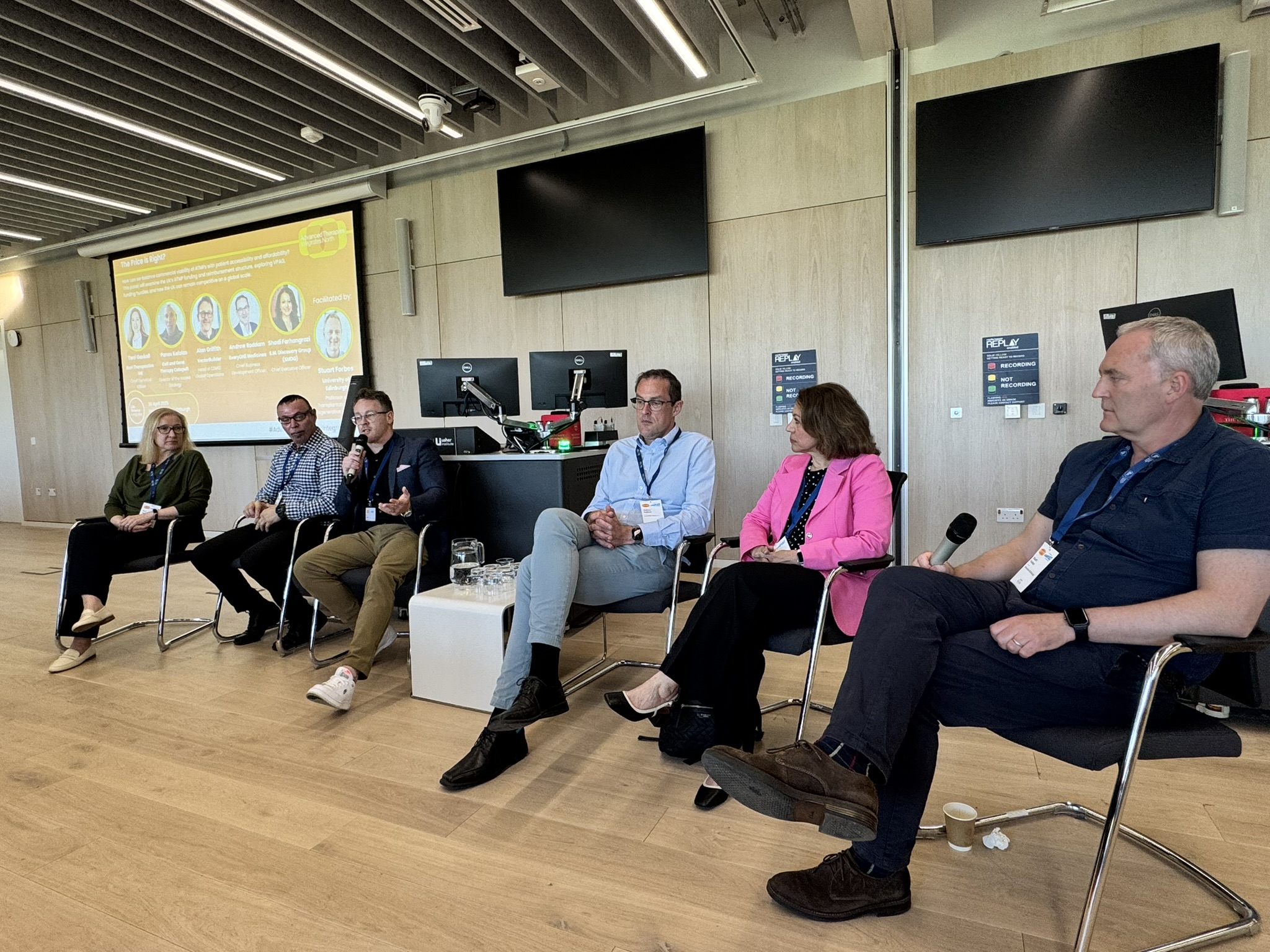
“It’s not just affordability. It’s about the broader value story. Are we demonstrating fewer hospitalisations, reduced intervention, better patient outcomes? If we can show that, the economic case becomes much clearer.”
Discussions highlighted the importance of developing new economic frameworks—ones that consider not only cost-effectiveness over time, but the wider social and system-level benefits of curative therapies. Speakers pointed to examples like sickle cell disease, where successful gene therapies could remove the need for lifelong blood transfusions, emergency admissions and lost productivity—ultimately reducing costs, improving lives, and boosting the economy.
Several panellists also underscored the need for early engagement with HTA bodies and payers. Too often, economic modelling is treated as a late-stage task, resulting in avoidable delays or misalignment at the point of launch. There were calls for clearer dialogue, real-world data generation, and greater willingness from both developers and commissioners to explore flexible, value-based payment structures.
“We talk a lot about reimbursement challenges, but part of the issue is communication. If payers aren’t brought in early and shown the clinical and societal value, we can’t expect them to be confident in funding decisions.”
Shifting to a value-based model will require health systems to rethink how, where and for whom resources are allocated. Scotland, with its integrated data infrastructure and policy agility, could be among the first to show what system-wide access to ATMPs can look like in practice.
Advanced Therapies Integrates North 2025 made one thing clear: the science is ready. The UK—and particularly Scotland—has the academic excellence, clinical infrastructure, and collaborative ambition to lead the global charge in ATMPs.
What’s needed now is delivery: joined-up digital systems, scalable manufacturing, trusted economic models and equitable access frameworks that ensure these therapies don’t just exist—but actually reach the people who need them.
The question is no longer “can we?” It’s “will we?”
